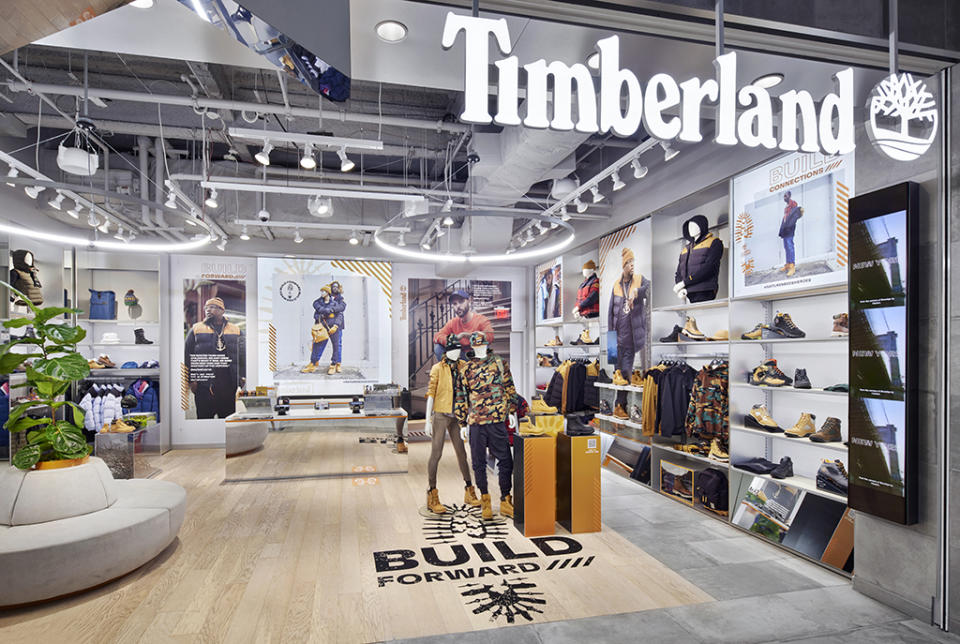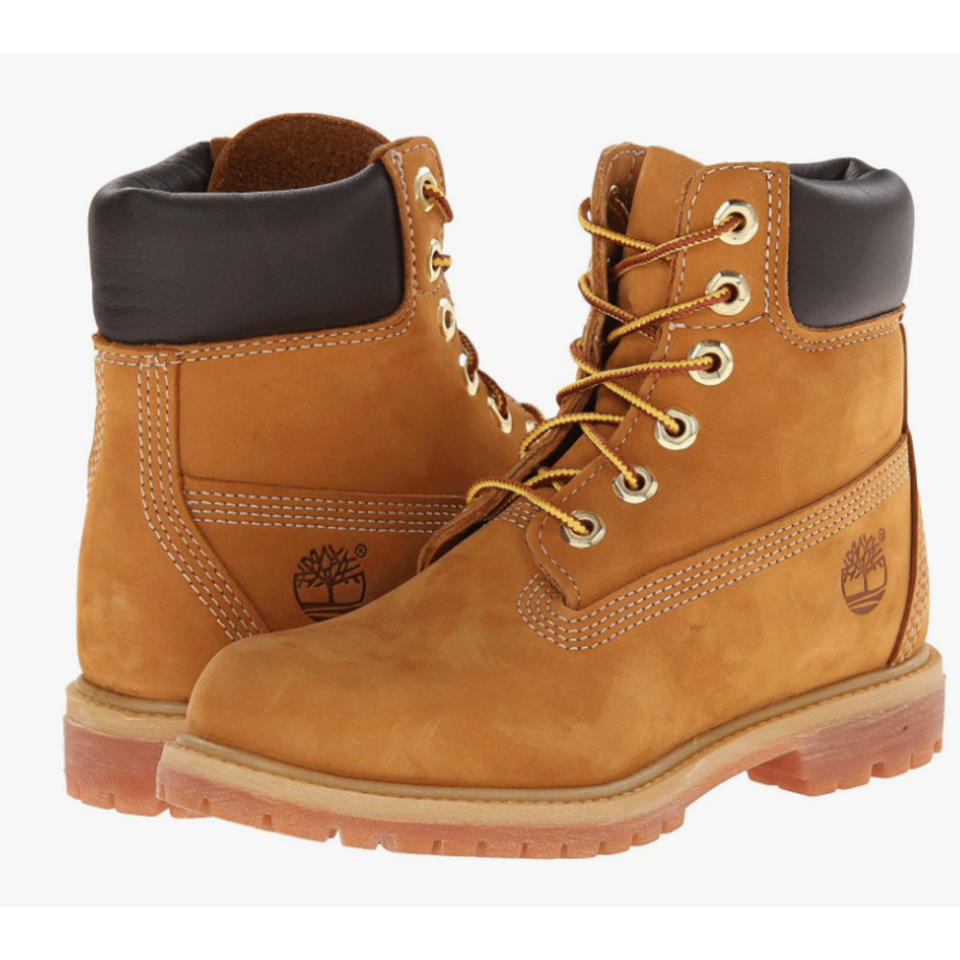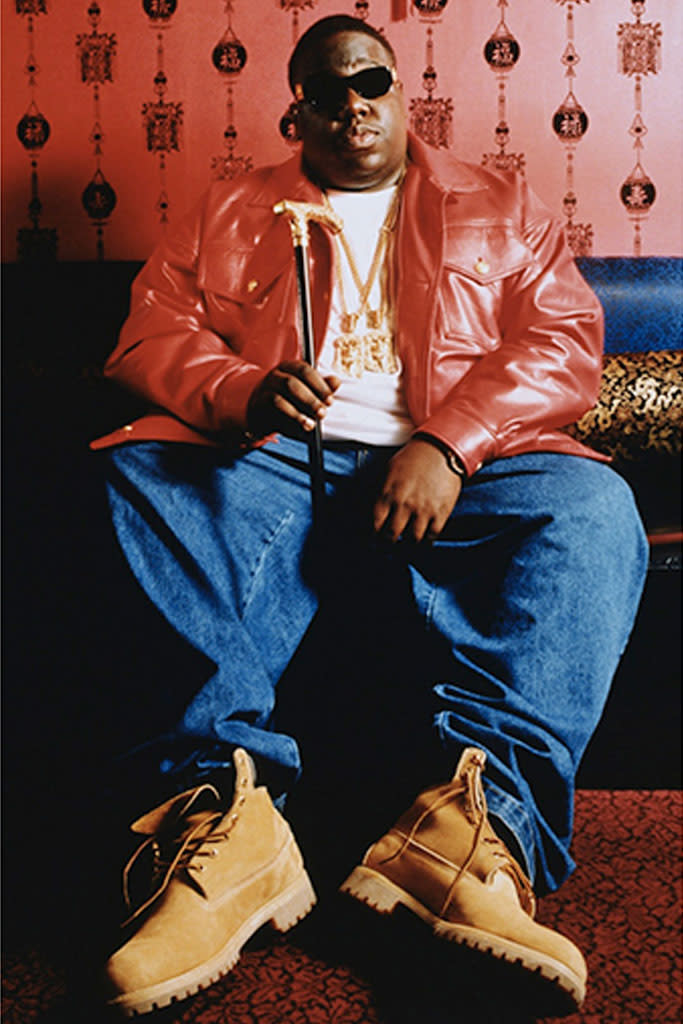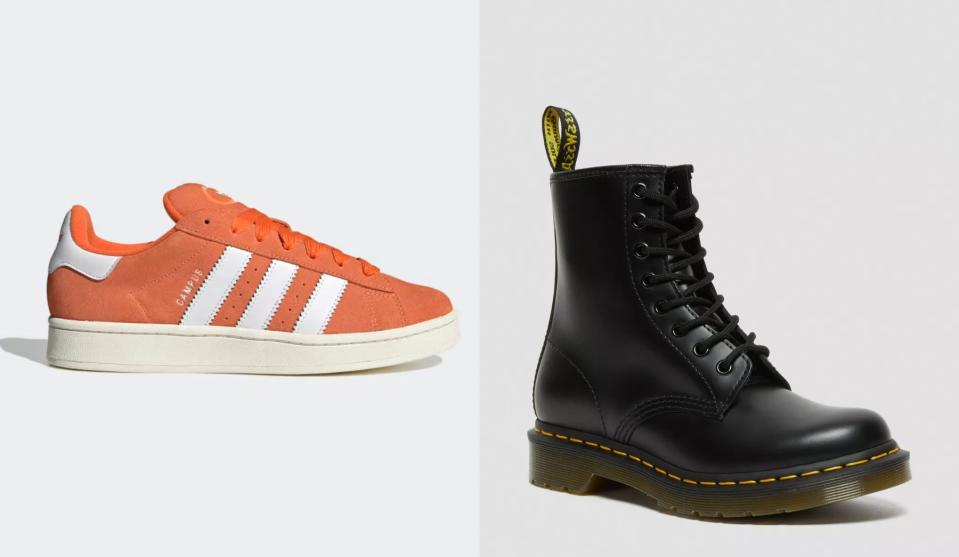The History of Timberland: 6-Inch Boots, Hip-Hop Influence and More

Timberland set out to corner the market on functional footwear but soon became a fashion sensation — and it all started with a single boot.
The brand’s classic yellow nubuck leather boot, first introduced in 1973, was designed for blue-collar workers needing a sturdy, hard-wearing shoe. Before long, though, the utilitarian boots found an unlikely fan base among hip-hop artists who put the style on the map and helped turn it into a fashion and pop culture icon.
More from Footwear News
The History of Red Wing Shoes: High-Quality Boots, Military Footwear and More
The History of Converse: Chuck Taylor All Stars, NBA Deal and More

Today, Timberland’s yellow boots — affectionately known as “Timbs” — are equally at home on a work site and the world’s hottest runways. The brand has rolled out coveted collaborations with the likes of Jimmy Choo, Louis Vuitton, Supreme and Off-White, and shown up on countless celebrities including Rihanna, Jennifer Lopez, Drake and Mark Wahlberg.
Here is a look at Timberland’s evolution from humble origins to icon status.
How old are Timberland boots?
Timberland traces its long history back to 1918, when founder Nathan Swartz, a fourth-generation, Ukrainian-born shoemaker, began his career in the United States. In 1952, Nathan identified a unique business opportunity and acquired a 50-percent stake in the Boston-based Abington Shoe Co.
Two years later, he took full control of the company, which eventually relocated its manufacturing operations to a riverside factory in nearby Newmarket, N.H. Together with his son Sidney Swartz, Nathan began producing rugged, waterproof boots, filling a local need for footwear that could withstand New England’s notoriously harsh winters.
The 6-inch boots
In 1973, five years after Nathan’s retirement, Sidney debuted the distinctive yellow boot that would become a fashion and cultural icon. The Original Timberland 8-inch boot featured a premium waterproof leather outer, seam-sealed construction and padded collar. A 6-inch version was released three years later.

The boots utilized the innovative technique of injection molding to create sturdy yet flexible and lightweight rubber outsoles. The process — which seamlessly fused the soles to the boots’ uppers without stitching — not only sped up production time but made the boots truly waterproof.
When did Timberland boots become popular?
The boots’ popularity grew, prompting Sidney and brother Herman to focus on building the Timberland brand. They debuted their first ad campaign and expanded the product offering to include casual shoes. In 1978, they officially shed the Abington Shoe Co. name and incorporated as The Timberland Co.
The Next Generation
Sidney’s son, Jeffrey Swartz, joined Timberland in 1986, and the pair took the company public the following year. Jeffrey succeeded his father as CEO in 1989 and proceeded to grow Timberland’s revenues from $156 million to $1.4 billion by 2010, according to the Tuck School of Business.

Timberland in Hip-hop
In the 1980s and 1990s, Timberland’s rugged boots were enthusiastically embraced by hip-hop and urban culture, cementing their place in mainstream fashion. The boots made cameos in countless music videos at the time — worn by rappers Tupac Shakur, Nas, The Notorious B.I.G, Jay-Z and others — driving demand among everyday consumers.

As its popularity soared, Timberland broke into international markets, opened specialty retail stores and added additional product categories such as apparel and accessories.
Creative Outlet
After dipping its toes into the collaboration game in 1998 with a gray version of its classic boot for David Z, Timberland pumped out a series of high-profile collabs throughout the 2000s and 2010s with Colette, Stüssy, Tommy Hilfiger and more big names. The buzzy collaborations continue today. Each partner has put a fresh spin on the brand’s signature boot silhouette and helped keep it at the forefront of fashion.
A New Chapter
In 2011, Jeffrey sold the third-generation family business to industry giant VF Corp. in a $2.3 billion deal. At the time, he told Footwear News that selling the company his grandfather started was a “bittersweet” moment.
Reflecting on the day he first came to work at Timberland in 1986, he said: “I was my dad’s sidekick [and] I wanted to see what his dream could be. I was eager to see the brand become more than a New England shoe manufacturer. It’s never stopped being a family business and it won’t stop being a family business when I leave.”
Who Owns Timberland?
Timberland remains under the umbrella of VF Corp. today. One of the world’s largest apparel, footwear and accessories companies, VF also owns Vans, Dickies, The North Face, Altra, Jansport and Kipling.
Purpose Driven
Timberland has long been a leader in the industry when it comes to sustainability. For more than 20 years, the company has partnered with various NGOs to plant trees around the world to support reforestation efforts. It recently reached its goal of planting 10 million trees and has since committed to plant 50 million more by 2025, according to a report from VF Corp.
In 2006, Timberland set a new standard for product transparency by introducing a self-described “nutritional label” — adhered to its boxes — which provides consumers with information about where the shoes were made as well as their environmental and community impacts.
In September 2020, the brand announced a bold pledge to have a “net positive impact” on nature by 2030, outlining specific goals for all of its products to be designed with circularity and for its natural materials to be sourced from regenerative agriculture.

25 Shoe Styles That Defined ‘80s Fashion
Best of Footwear News
How to Clean White Sneakers & Keep Them Looking Fresh: Leather, Canvas, Suede and More Styles
How to Become a Lululemon Ambassador, Test Products and More Perks
The History of Red Wing Shoes: High-Quality Boots, Military Footwear and More
Sign up for FN's Newsletter. For the latest news, follow us on Facebook, Twitter, and Instagram.
